Eighth (Re)Conciliations Conference Focuses on Art, Space and Place
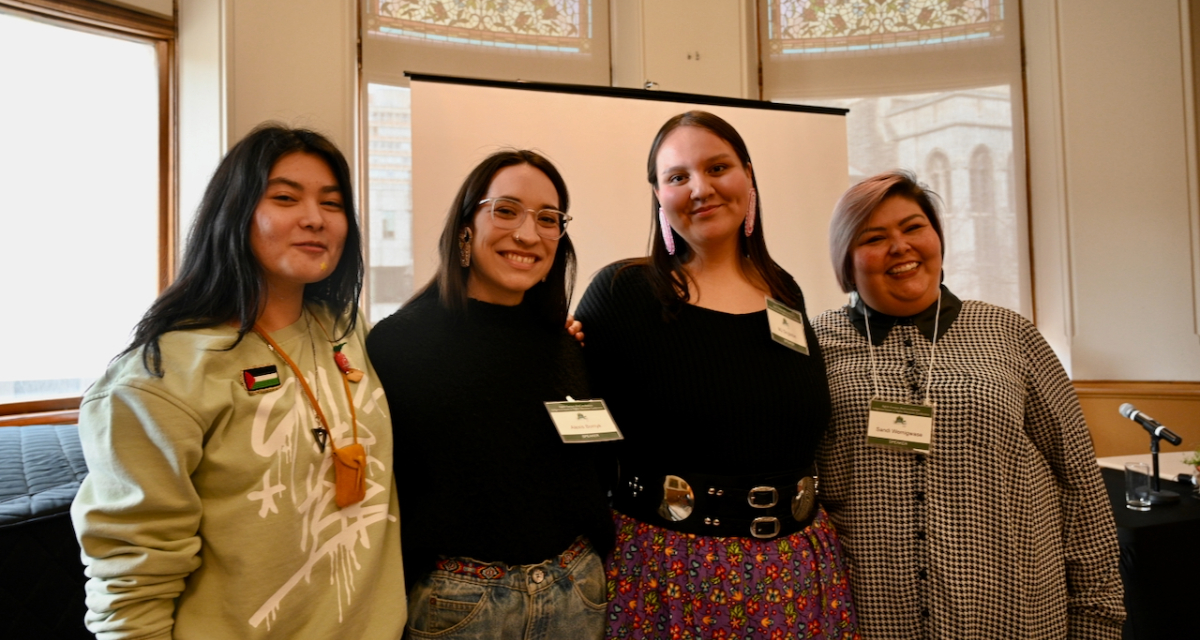
U of T undergrads Giselle Del Valle, Alexis Bornyk and MJ Singleton pose with moderator Sandi Wemigwase, special projects officer at the Office of Indigenous Initiatives, following their panel, “Personal and Academic Journeys through Art, Space and Place.” (Photos by Minh Truong)
How do our campus and city spaces create barriers for Indigenous members of the university community, and where are Indigenous spaces being reclaimed and created?
These questions and others guided discussions at the eighth annual Campus (Re)Conciliations Conference, the focus of which was “Intersections of Art, Space and Place.”
The gathering, held March 21 at Victoria University, featured a diverse lineup of speakers, artists and performers. Participants expressed and explored ways in which campus and city spaces can become—or be reclaimed as—places of belonging, in keeping with the calls to action around language, culture and justice in the Truth and Reconciliation Commission report.
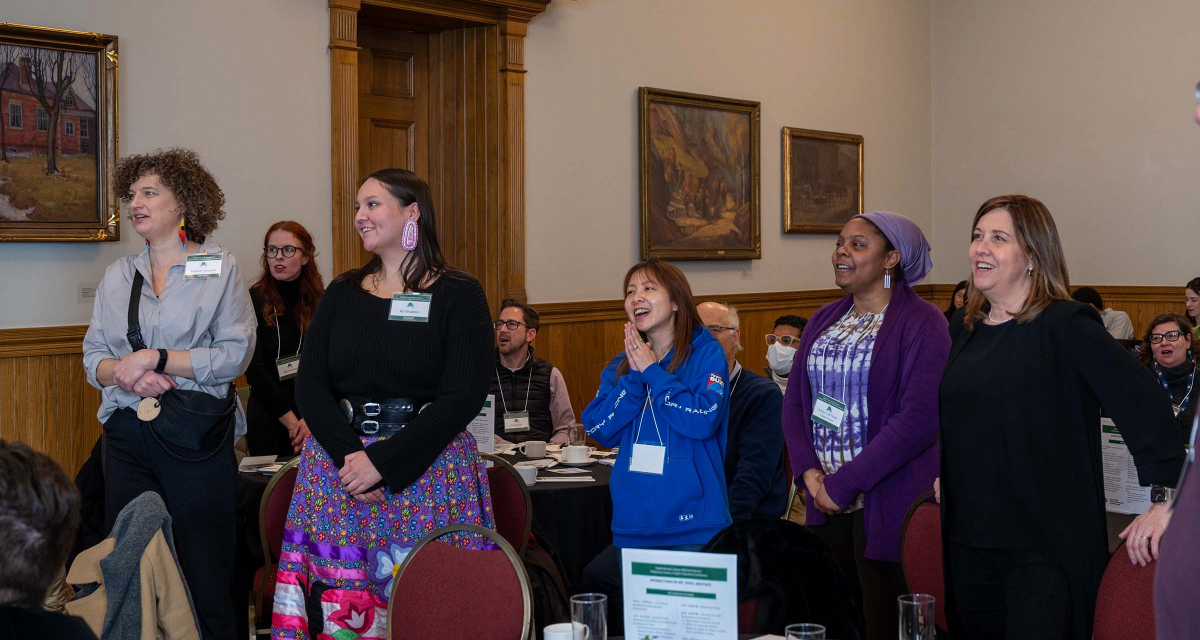
Hosted by the Office of the Dean of Students at Vic U in partnership with First Nations House and the Office of Indigenous Initiatives at U of T, the event saw students, staff, faculty and community members fill Alumni Hall in Old Vic for a day of discussions, workshops and performances. Lunch was catered by Dashmaawaan Bemaadzinjin (They Feed the People) and Nish Dish Catering, whose founder and chef Johl Whiteduck led a discussion on food sovereignty and the cultural and spiritual importance of Indigenous cuisine.
Attendees engaged in topics such as art as a tool for cultural preservation; architecture as “expressive justice”; Indigenous cuisine and food sovereignty; and the reimagination of academic spaces as sites of Indigenous knowledge.
Elder Dorothy Peters, a traditional teacher and member of the Victoria University Advisory Circle, opened the day with an Anishinaabe prayer she then translated into English. She thanked the “grandmothers and grandfathers and the creator for coming to be with us today.”
Co-hosts Kelley Castle, dean of students at Vic U, and Jonathan Hamilton-Diabo, the June Callwood professor in social justice, also welcomed the audience. The conference began shortly after the TRC made its recommendations.
“The goal was to create a listening forum to do some difficult, destructively constructive work to consider ways in which universities can or should respond to the TRC’s calls to action,” said Castle. “It has continued every year since and is an immensely productive and meaningful day of collaboration and trust.”
First Nations art is more than just performing, filmmaking, making regalia or beadwork, said Professor Hamilton-Diabo: “It’s connecting culture to a story.” He invited the audience to walk around campus and consider whose stories are told. “Whether you notice it or not, there is this underlying message about who counts. Many people do not see themselves on the walls—when you walk around, what are you missing, whose stories are missing?”
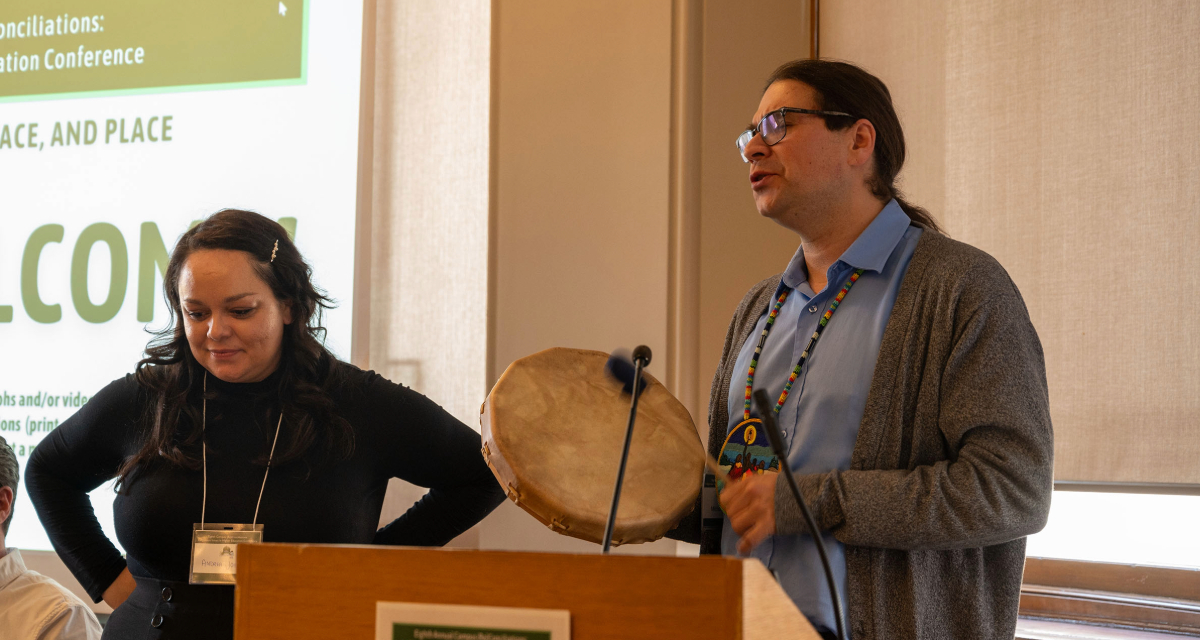
"Indigenous spaces are not new—they’ve been spaces of negotiation, spaces of conflict,” said Michael White, director of First Nations House and Indigenous Student Services at U of T.
Throughout the day, talks and performances explored how art, nature and buildings affect Indigenous representation, inclusion and belonging inside and outside the University’s walls.
The “Creating Indigenous Spaces with Purpose, Intention and Community” panel featured Senior U of T Indigenous staff Shannon Simpson and Kelly Crawford (Director and Assistant Director, Indigenous Initiatives), and Michael White (Director, First Nations House) discussing some of the architecture and landscaping initiatives across U of T’s three campuses, highlighting the Ziibiing project at St. George and the Indigenous House at UTSC.
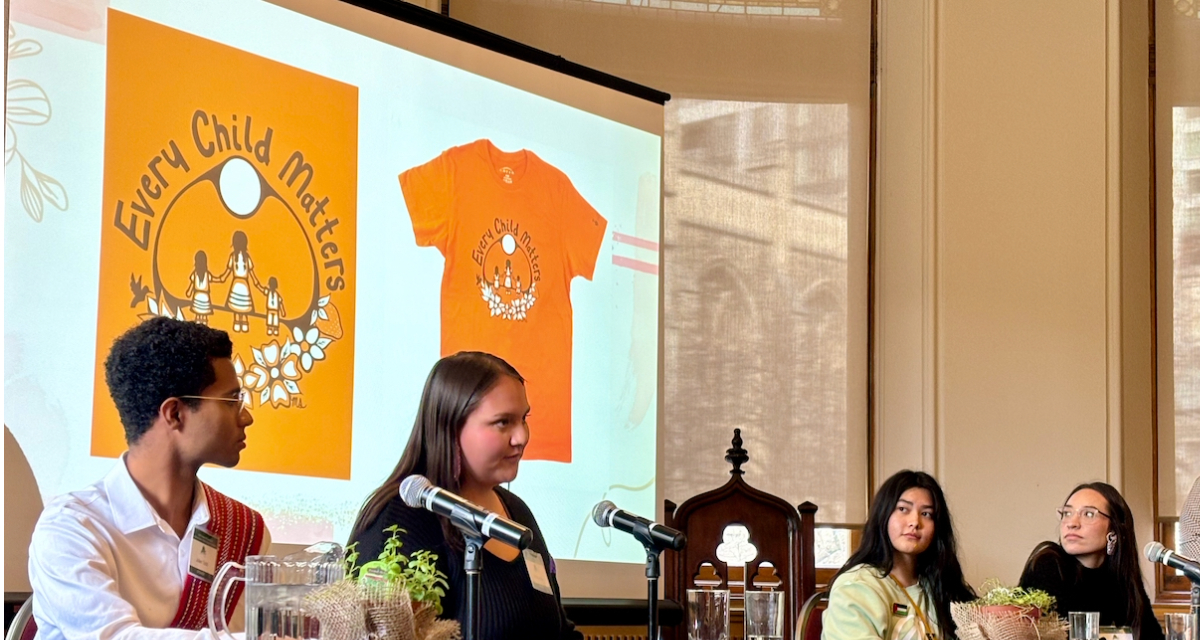
During another panel, U of T students Julien Todd, MJ Singleton, Giselle Del Valle and Alexis Bornyk reflected on the impact the physical and mental environment on campus has had on their academic and personal journeys.
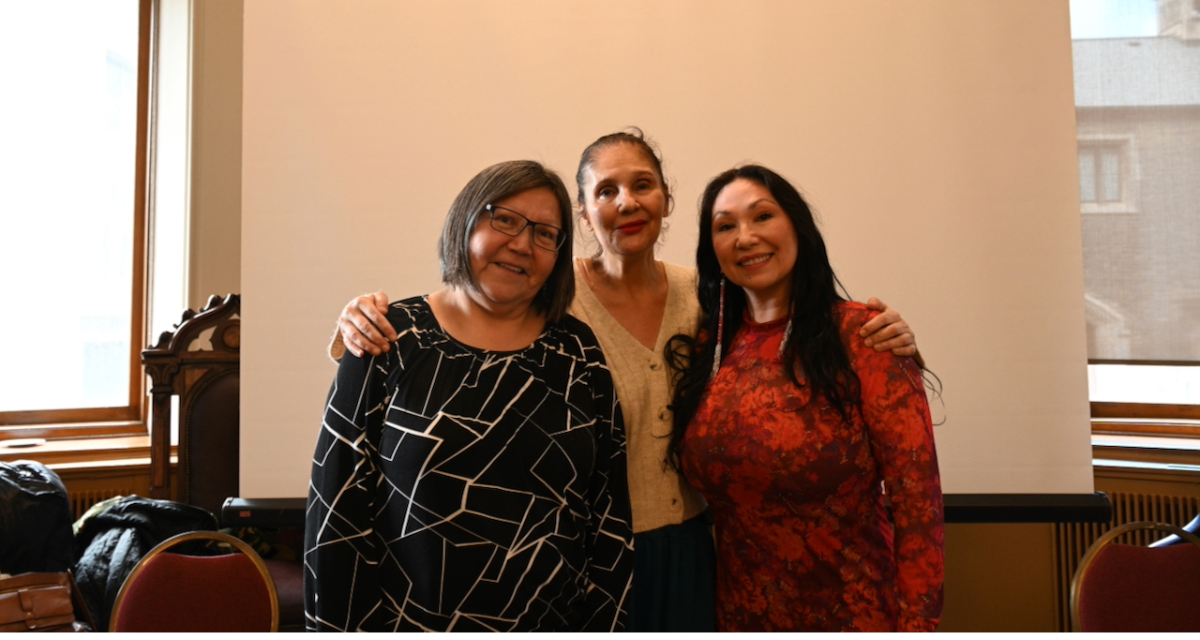
Professor Jill Carter (centre), artist and activist Trina Moyan (right) and Professor Brenda Wastasecoot (left) led a poignant presentation. “Interweaving presentation, audio-visual media, dramatic readings and audience involvement, we were drawn by members of the collective into the struggles of encounter, negotiation and learning that produced the first Indigenous play in the space of Hart House Theatre in its 100-year history,” said Professor John Duncan, academic director of Vic’s Ideas for the World program.
The annual Campus (Re)Conciliations Conference is part of Victoria University’s Ideas for the World program, which hosts a wide variety of academic co-curricular programs and conferences. Want to stay informed about next year’s gathering? Please fill out this form to be added to the Campus (Re)Conciliations mailing list.
